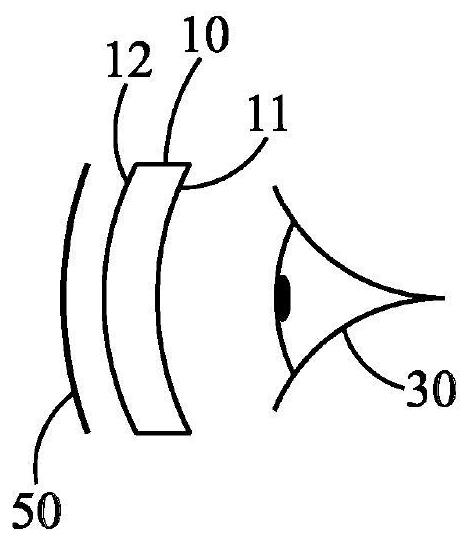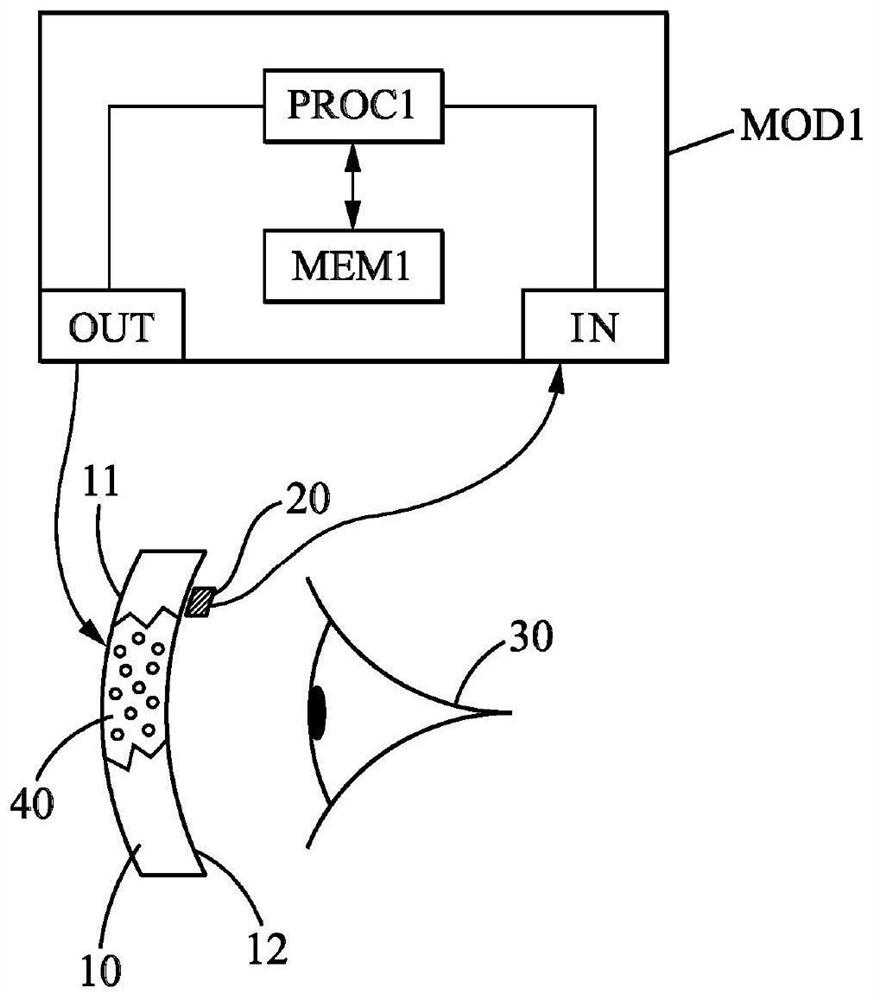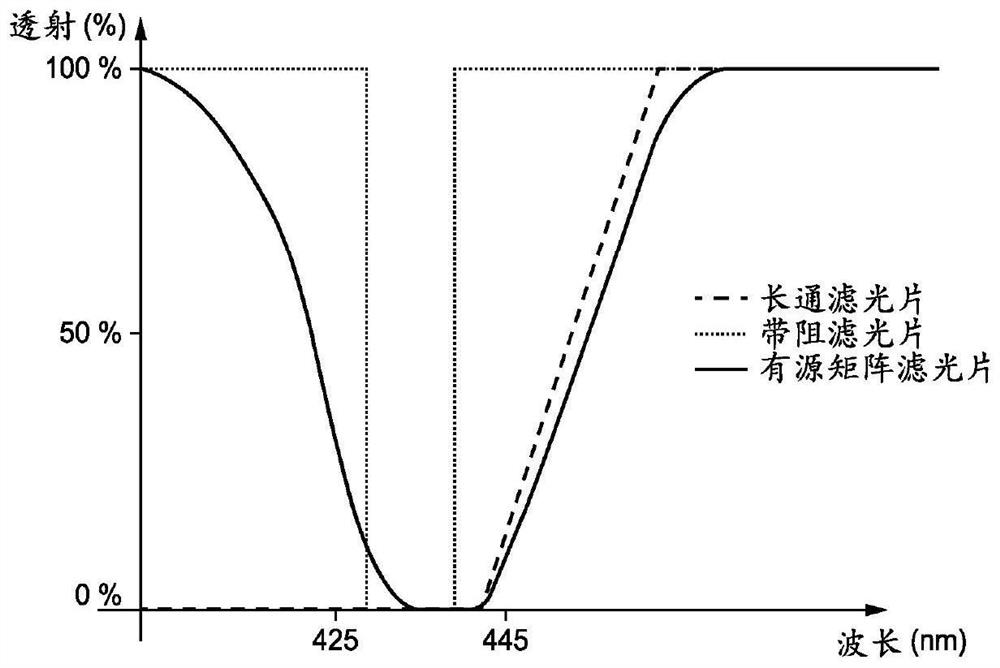Filter for eye cone cells protection
A technology of cones and filters, used in glasses/goggles, optics, optical components, etc.
- Summary
- Abstract
- Description
- Claims
- Application Information
AI Technical Summary
Problems solved by technology
Method used
Image
Examples
Embodiment Construction
[0103] Active and Passive Filters
[0104] As used herein, if an eye cone protection filter suppresses at least some transmission of a range of wavelengths while having little or no effect on the transmission of visible wavelengths outside that range (unless it is specifically configured for this purpose) , the eye cone protection filter selectively suppresses wavelengths in this range. The term "rejection rate" or "inhibition rate" or "degree of inhibition" or "filtration rate" refers to the percentage of incident light within one or more selected wavelength ranges that is prevented from being transmitted. In contrast, the term "transmittance" refers to the percentage of light that is actually transmitted. For example, a transmittance of 0% means that no light is transmitted through the filter, thus corresponding to a rejection of 100%, all light reaching the filter is either blocked, absorbed, diffused or reflected. The parameter "wavelength or bandwidth range" is define...
PUM
 Login to View More
Login to View More Abstract
Description
Claims
Application Information
 Login to View More
Login to View More - R&D
- Intellectual Property
- Life Sciences
- Materials
- Tech Scout
- Unparalleled Data Quality
- Higher Quality Content
- 60% Fewer Hallucinations
Browse by: Latest US Patents, China's latest patents, Technical Efficacy Thesaurus, Application Domain, Technology Topic, Popular Technical Reports.
© 2025 PatSnap. All rights reserved.Legal|Privacy policy|Modern Slavery Act Transparency Statement|Sitemap|About US| Contact US: help@patsnap.com



